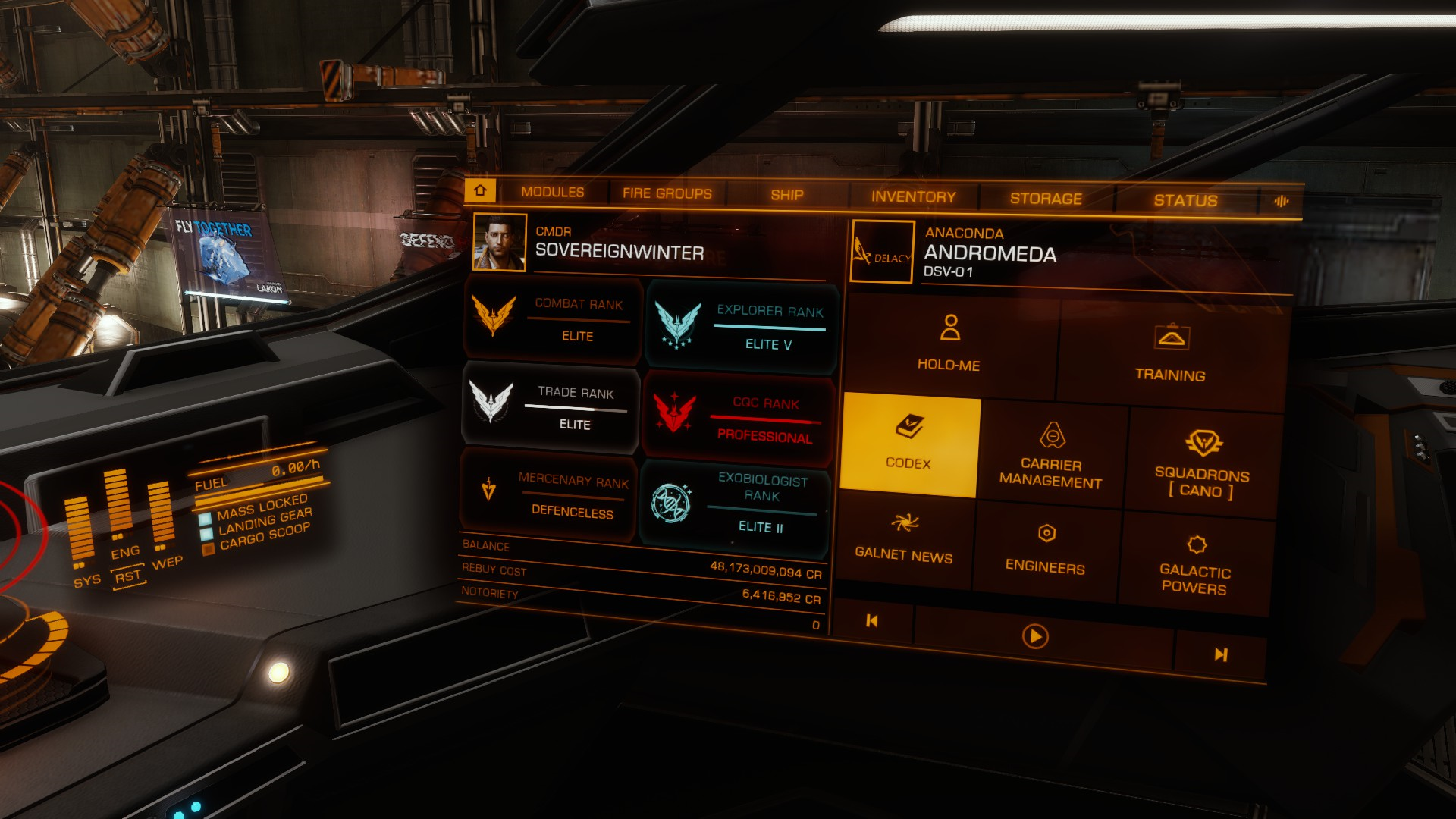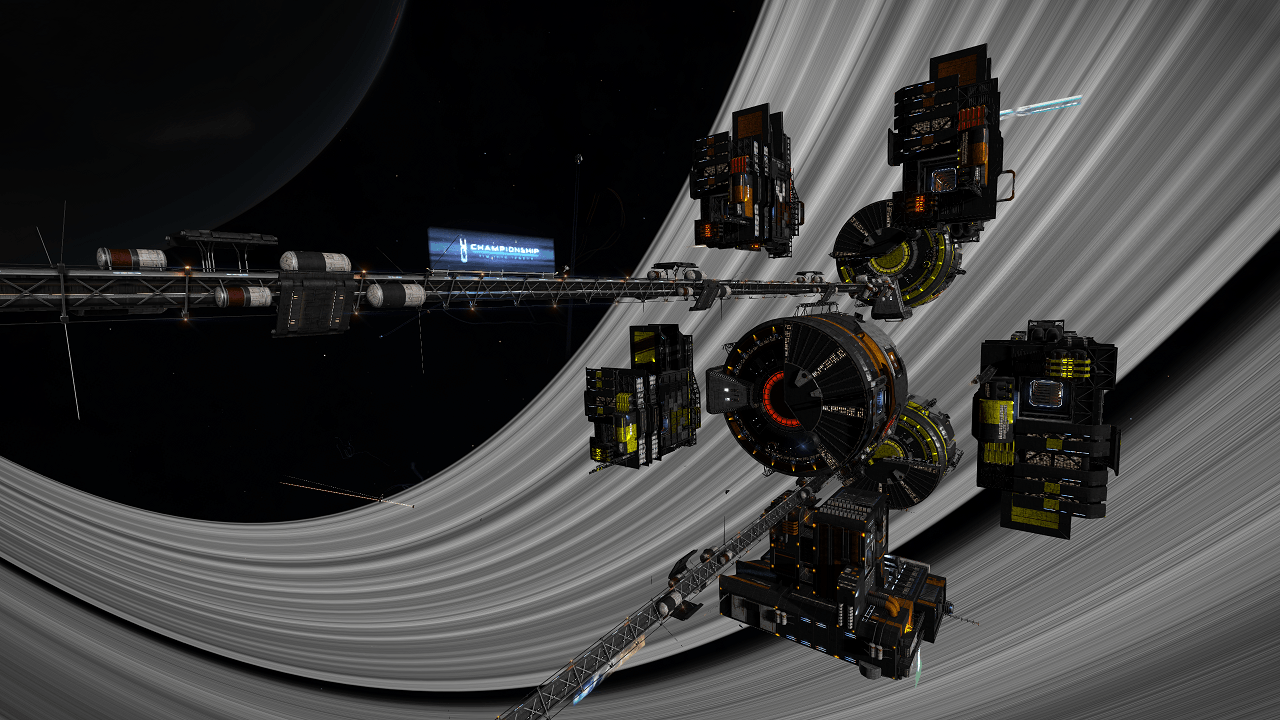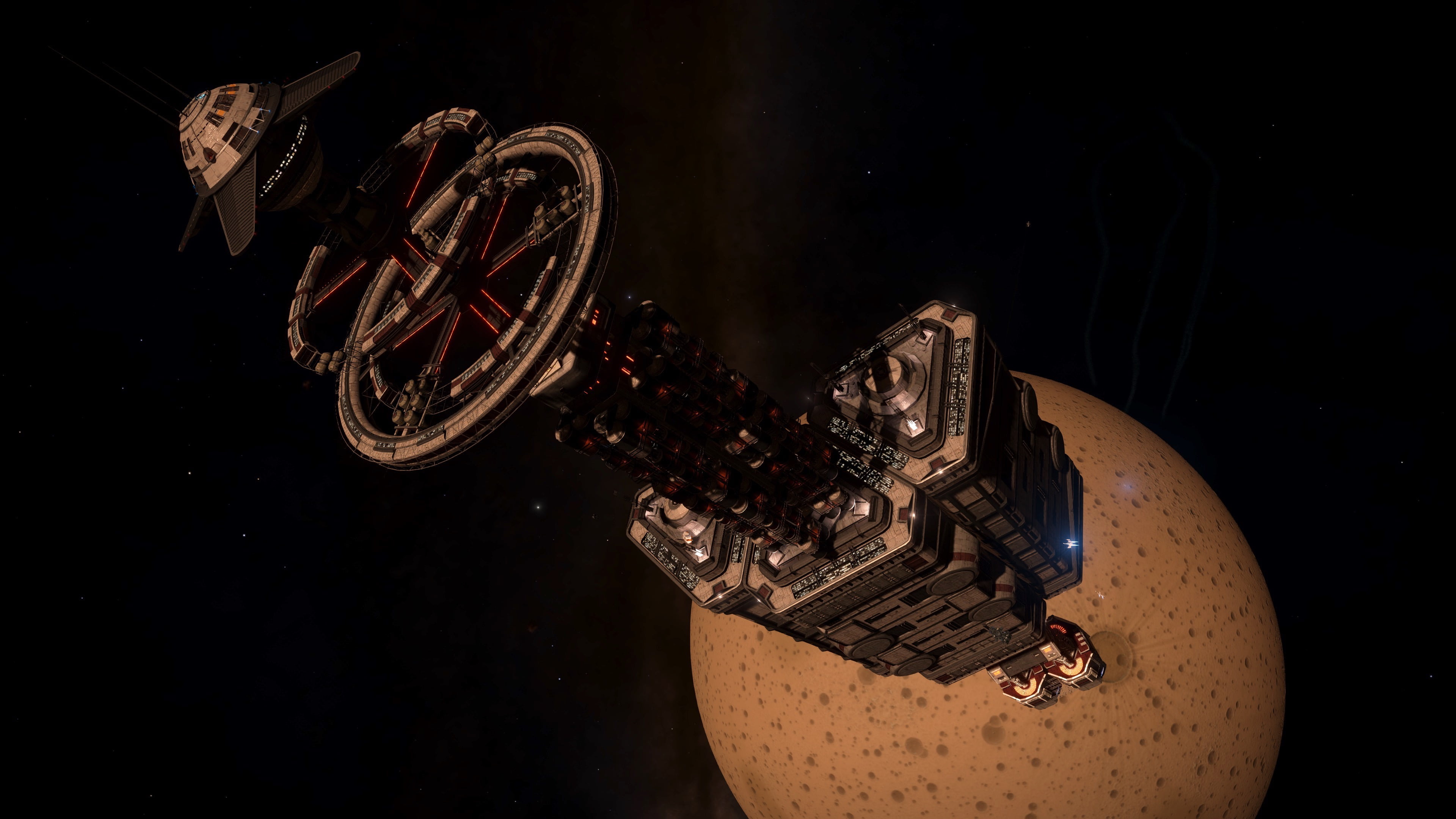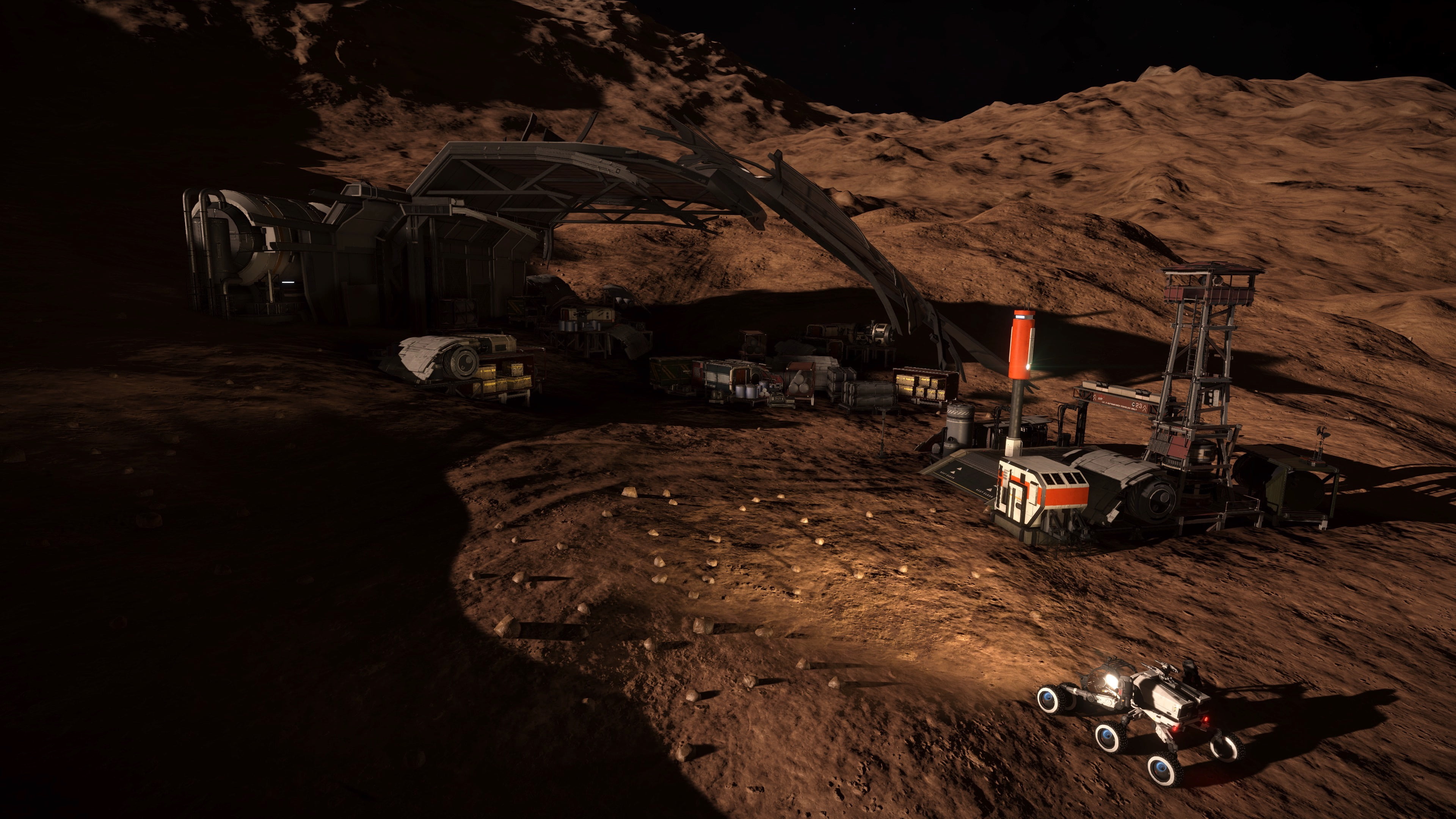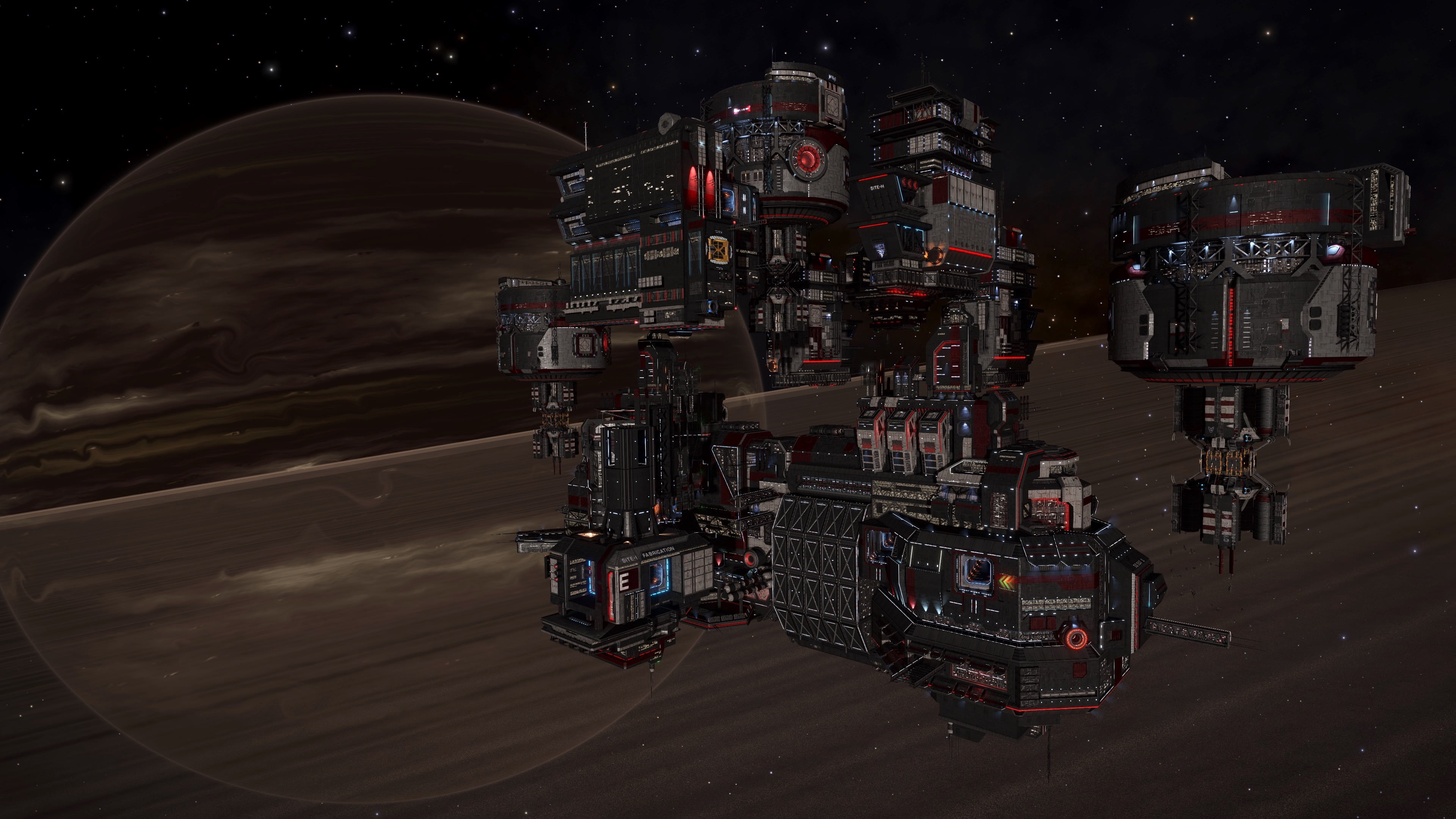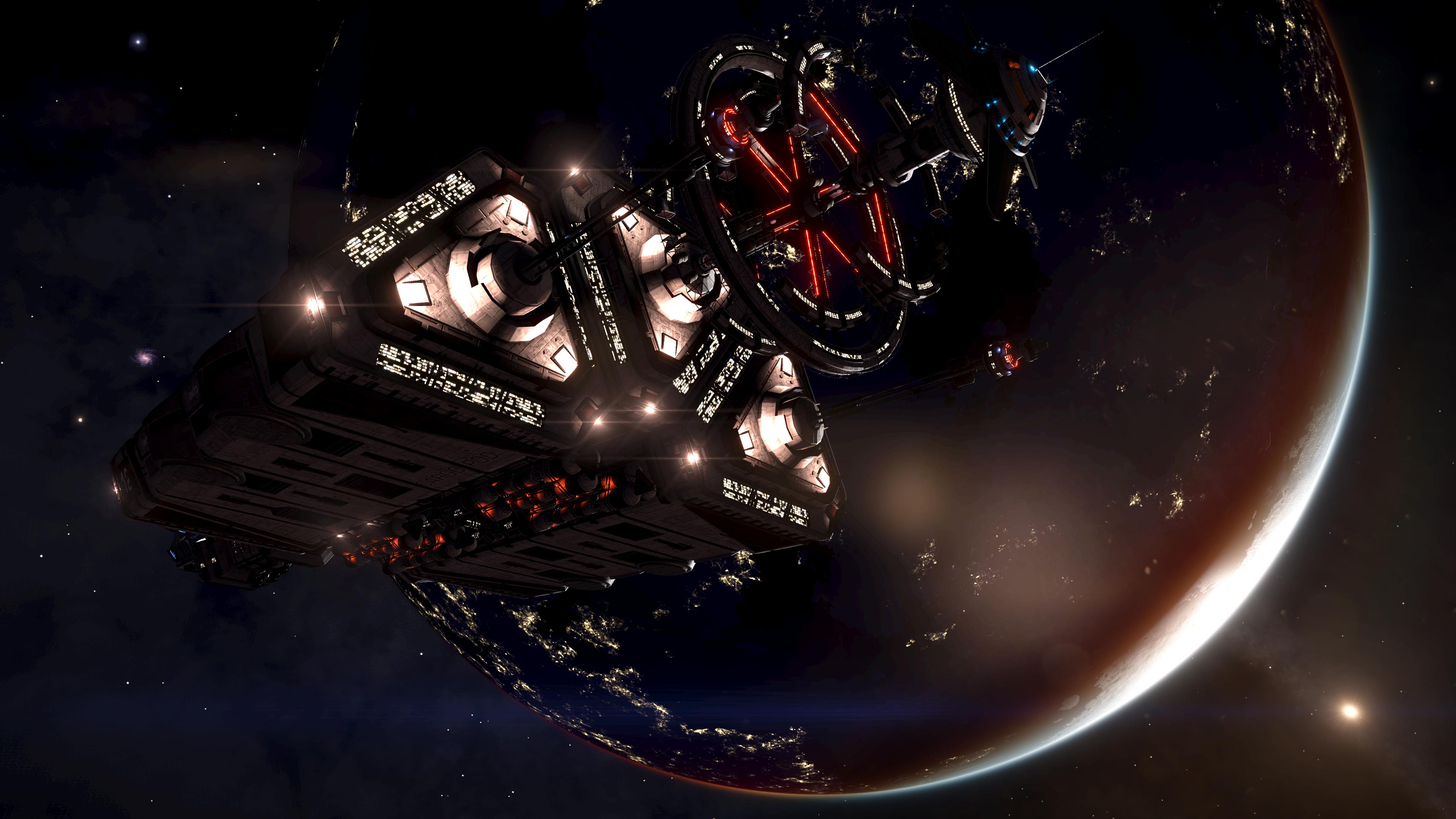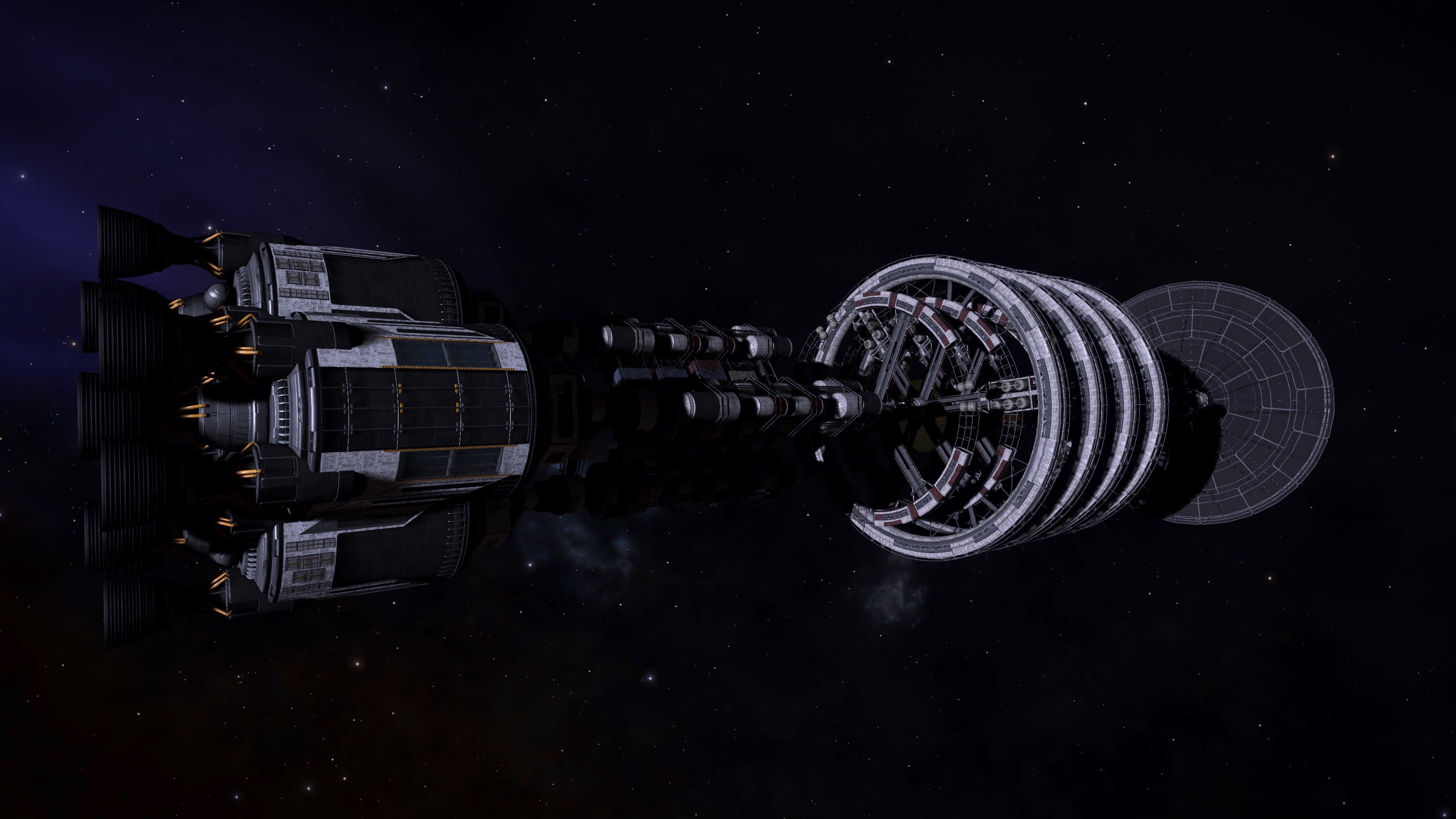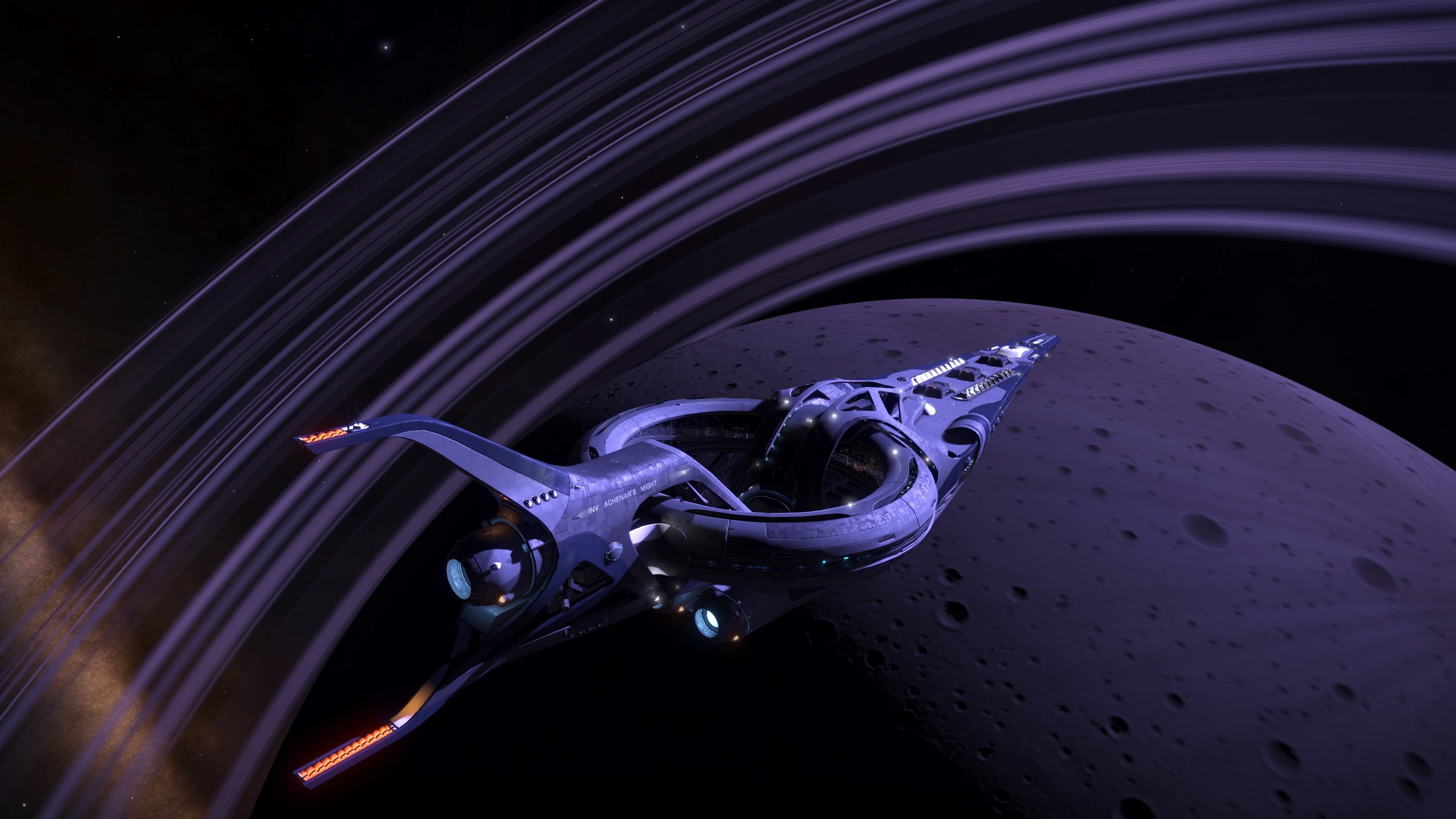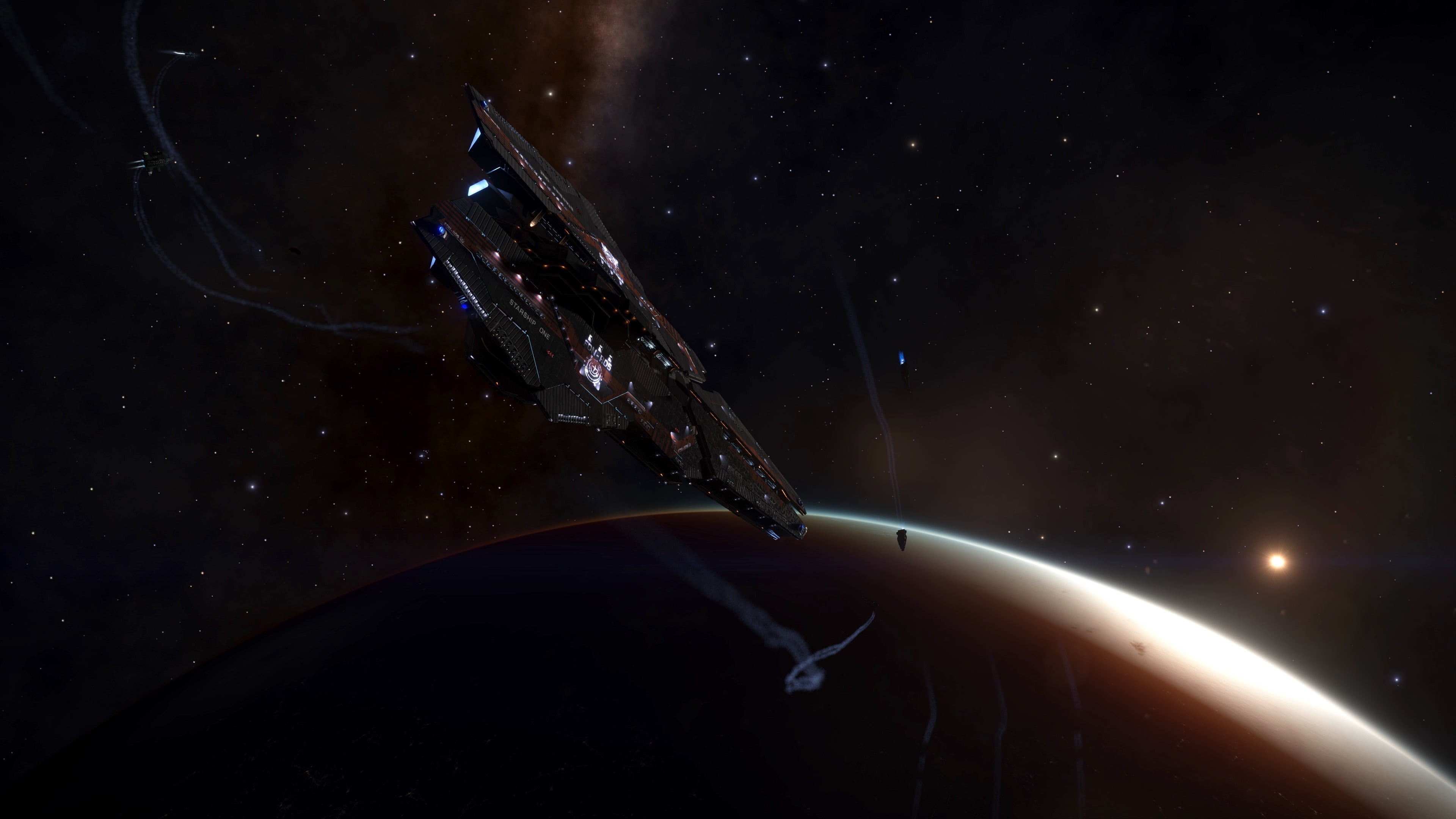History
Surface biology can be found throughout the galaxy on landable planets. Initially pilots were only able to land on planets with no atmosphere and this limited the species that could be found on them. There were also no tools for locating the biology. Commanders had to resort to what was affectionately described as beige patrol. Pilots would fly over the surface for hours on end looking for tiny specs on the surface that might be life.
The first biologicals to be found in 3302 were Bark Mounds, Anemones, Brain Trees and Thargoid Barnacles. Thargoid Barnacles strictly speaking aren’t considered to be true biologicals as they are considered to be biomechanical constructs of the Thargoids.
Despite being aware of the existence of Sinuous Tubers from found footage from a doomed expedition in 3303, no new species were found until 3304. The Pilots Federation supplied ship scanners that were able to identify the location of life on the surface of planets, making it much easier to find.
From then on, additional species were discovered, starting with the Sinuous Tubers and followed quickly by Amphora Plants and Crystalline Shards.
Despite the technological advances, life remained relatively rare in the galaxy restricted to small areas around nebulae.
The biological specimens that could be found at this time are known as Horizons era biology.
In 3307 ships became capable of landing on planets with thin atmospheres. The Pilots Federation released new surface scanning technology that led to a huge increase in the volume and variety of life that could be found across every region of the Galaxy. This marks the beginning of the Odyssey era.
Not only were the Odyssey era biological samples more abundant but they could also share biomes with multiple other species. At the time of writing the most species found on a single planet was 12 in Drojau BG-W d2-1 A 3 b.
Some Horizons Era species were also found to exist on atmospheric planets, but this was quite a rare occurrence.
In 3307 the Vista Genomics Company opened branches across the galaxy and started offering lucrative rewards for samples scanned with the new Organic Scanner module supplied with the Artemis Environment suit.
Taxonomy
The names of the biological samples are constructed from the different taxonomic components, Family, Genus, Species and Variety. For instance the Emerald variety in the species Upapam of the Genus Fonticulua in the Odyssey family is known as Fonticulua Upupam – Emerald.
Family
There are two families of Biology named after the eras in which they were found. Horizons and Odyssey
As previously noted there is a broad distinction between the Horizons family and the Odyssey family. The Odyssey family of biology can only be found on landable planets with a thin atmosphere. The Horizons family can appear mainly on planets with no atmosphere and occasionally on planets with thin atmospheres . One other difference between the two is that only the Horizons family can sprout growths which can be harvested for materials.
Genus
This is the principal taxonomic category that ranks above species and below family. Some of the Horizons family only have a genus and do not differentiate further into species and varieties.
Species
All of the Odyssey family can be split into distinct species. No two varieties of the same species can be found on the same planet.
Variety
The variety is a sub species. Often the varieties will be tied to a specific star class or a specific material in the composition of the planet.
Horizons Family
| Image | Genus | #Species | #Varieties | Description |
|---|---|---|---|---|
| Amphora Plant | 1 | 1 | These organic structures take their name from a type of container dating from Earth’s Neolithic period. | |
| Anemone | 8 | 8 | Despite their name, these organic structures more closely resemble the shells of sea urchins. These organic structures can tolerate a wide range of temperatures and are able to absorb energy from nearby stars. | |
| Bark Mounds | 1 | 1 | These organic structures survive by absorbing elements from nova and supernova, with the dense outer layer protecting them from the severest radiation. | |
| Brain Tree | 8 | 8 | These organic structures are so called because of the vaguely brain-like growths on the ends of their branches. These resilient organic structures absorb minerals via their subsurface roots and energy via their outer skin. | |
| Crystalline Shards | 1 | 1 | These crystalline structures are created by large colonies of microorganisms. | |
| Sinuous Tubers | 8 | 8 | These organic structures are distinguished by their tubular shape and vivid colouration. These organic structures are merely the above-ground portion of a much larger subterranean organism. |
Odyssey Family
Overview and Familial Characteristics
| Image | Genus | #Species | #Varieties | Description |
|---|---|---|---|---|
| Aleoida | 5 | 53 | Extremely hardy photosynthetic organisms that thrive in arid environments. Thick, waxy leaf structures protect them from extreme surroundings. When gaseous exchange becomes unfavourable. The leaves can completely shut off the organism from the atmosphere causing a state of hibernation. The pointed leaves create precipitation slopes, which draw liquids to the heart of the organism. Here they are absorbed through a series of specialised cells, and stored in the root structure until needed. | |
| Bacterium | 13 | 104 | True unicellular extremophiles capable of living in the full spectrum of temperatures, chemical soups and atmospheres. They form a kaleidoscopic range of patterns and colours based on their method of metabolism. They derive energy from photosynthetic chemosynthetic or thermosynthetic processes. These are believed to be the precursors for many life forms, and are often found in conjunction with other species. Links between the biochemistry of bacterial colonies and neighbouring organisms are likely but as yet unproven. | |
| Cactoida | 5 | 49 | Photosynthetic organisms that have adapted to extreme conditions by reducing their surface area to volume ratio, thereby protecting more sensitive tissues from exposure.The outer layer is formed from specialised light-transmitting cells. These are filled with an insulating hydrophobic layer, which helps to maintain core temperature and liquid retention. Deep, extensive root structures hold the organisms in place, and facilitate the extraction of trace minerals. Some cactoida species feature explosive seed distribution as a method of reproduction. | |
| Clypeus | 3 | 26 | Extremophile organisms that have evolved to create hard shield structures, primarily to protect against stellar radiation. They also collect and condense traces of liquid material in the atmosphere, allowing the organisms to flourish in extremely arid environments. The shields are typically synthesised from surrounding inorganic material. which will frequently define their shape and colouration. | |
| Concha | 4 | 31 | Highly specialised complex extremophiles that have developed protective and sturdy motile shell structures. These open and close based on the suitability of the current environmental conditions. The shells are an organic structure with an excreted inorganic insulated and sometimes reflective casing that help the organism maintain homeostasis. The internal organisms, which are remarkably tough in their own right, are only exposed for metabolic and reproductive purposes. | |
| Electricae | 2 | 12 | Organisms found exclusively on extremely cold ice worlds in the vicinity of frozen lakes. The visible tips can be observed protruding from the ice, often near fissures where it is thinnest. The bulk of the organisms extend down through the ice into subsurface melt potentially for several kilometres. Electricae are superconductive in nature. utilising the thermal circulation of the surrounding fluid to drive an electrochemical process. This is probably why they are limited to planets with atmospheres dominated by noble gases. The surface structure exists to provide a connection to the atmosphere, which in turn creates a point of electrical potential difference. A by-product of this is the bioluminescent display that runs through the organism. Although never witnessed, reproduction presumably occurs below the surface by some unidentified process. | |
| Fonticulua | 6 | 77 | Photosynthetic colony organisms found exclusively on ice worlds, where they have embraced the surrounding frozen material as a form of protection. As the fonticulus develop they melt ice from around them, absorbing the liquid through tiny cellular pores and passing it to the colony’s reproductive edge. Here the liquid is excreted and immediately refreezes, creating hard translucent exoskeletons that provide protection for the organisms. Frond structures create a wide flat space that expose internal photosynthetic cells to as much light as possible. Reproduction appears to occur by colony division, most likely when a shard of the structure collapses under its own weight and the smaller shard creates a new colony. | |
| Frutexa | 7 | 58 | Robust woody plants with deep rooting structures to gather liquids and hold themselves in place where the ground may be unstable. They are photosynthetic organisms with specialised photoreceptors that work even in low light conditions. As such they are highly successful, and are widespread and diverse in nature. Their small leaf structures protect them against extremely low temperatures and liquid loss in higher temperatures. | |
| Fumerola | 4 | 24 | Extremophile organisms located in regions with active fumaroles. Their metabolism is driven exclusively through chemosynthetic and thermosynthetic mechanisms based on nearby volcanic activity. Proximity to volcanic heat allows them to survive in environments where the ambient temperature is naturally too cold for them. They frequently incorporate minerals from the fumaroles’ ejecta, meaning they can appear inorganic at first glance and may sport exotic colours. | |
| Fungoida | 4 | 24 | Organisms that live deep inside a planetary substrate. They share similar morphology to fungi but are not saprophytic, instead their mycelial body drives its metabolism through chemosynthetic and thermosynthetic processes. These are facilitated by the substrate which also protects the organism from environmental extremes. The exposed aspects of the organisms are primarily involved in reproduction. This is frequently through spore ejection, but certain species also support gaseous exchange with the atmosphere. Some fungoicla exhibit bioluminescent behaviours as part of a metabolic process involved in the breakdown of accumulated toxins. | |
| Osseus | 6 | 41 | Slow-growing organisms that can be found exclusively on rocky areas of planets. They are defined by a symbiotic relationship that has evolved between two unicellular organisms. which are now inseparable. One cell type is solely responsible for energy production by either photosynthetic. chemosynthetic or thermosynthetic processes. The symbiotic cells harvest some of this energy, and in turn deposit a hard rock-like substance extracted from the local geology to create a rigid endoskeleton. This structure provides a solid base for the organism to exist. It features complex folds that help increase available surface area for metabolic interactions. Osseus have been observed to create callus-like cell coverings, and withdraw themselves into the endoskeleton for protection. | |
| Recepta | 3 | 25 | Extremophiles that are found exclusively on planets wlth atmospheres dominated by sulphur dioxide. Using a combination of inorganic and hydrocarbon materials, they build a shielding bubble. This allows them to create an isolated biome with regulated temperature and chemical composition. Growth is a difficult and complex process that requires careful melting, regrowing and freezing of the external shell so that the internal organism can develop. This is a gradual process meaning that larger recepta are of significant age. Reproduction is also similarly complex and revolves around a budding process, which creates a smaller version of the adult. Once detached, it can roll under the action of gravity and air currents before coming to rest, where it will deploy a holdfast marking its final position. | |
| Stratum | 8 | 64 | Low-lying photosynthetic organisms that bond tightly to the surface of rocks. The body of the organism may be embedded in the rock subsurface to provide protection from the elements, leaving the tough photosynthetic proto-leaves exposed. Their simple proto-evolutionary nature means that they are a common sight on rocky worlds. Colouration is driven by a mixture of the mineral content of the attached rock and the absorption spectral of the nearby stellar body. | |
| Tubus | 5 | 55 | Highly specialised organisms that can grow to extreme heights, which peak when in a mature state. The organisms’ height and ability to survive is largely constrained by gravity. The lack of any real atmospheric weather has not put evolutionaly pressure on the towers to be strong, so they form tall but thin structures which cannot be supported in high-gravity environments. The tower is formed from wrapped leaf-like structures, which create a regulated chimney void. This is used by the organism to create and maintain an artificial internal atmosphere, where discrete chemical processes can be undertaken along the length of the tower. Waste gases and other material may he released from the top of the tower. Some species feature external rings that can be used to gauge an organism’s age. | |
| Tussock | 15 | 122 | Robust photosynthetic plants similar in appearance to clump grasses. They have a shallow but complex root structure, which requires a solid surface to produce structural stability. Clumps may form through tillering or wider dispersal through a variety of seeding mechanisms. Some species have adapted cellular structures containing high sugar concentrations to protect against freezing damage. |
Data And Analysis
The aim will be to document every species using all the data that we have available to show regions where they are located and any visialisation tools that we have at our disposal.
You can find details of the biology gathered through the Canonn EDMC plugin and EDDN on our Biology Spreadheet https://canonn.fyi/biosheet
You can download a dump of all codex data we have gathered here: codex.json.gz
The Bioforge tool summarised all system and body data for each species and is available here: bioforge
Please contact us via discord if you would be interested in documenting any of the Genuses listed here.
Credits
We would like to thank our fellow scientists at the Deep Space Network who were the first to document all the new Odyssey Species on their website https://ed-dsn.net/en . With their permission we have copied the Codex text that they have transcribed from the ship-board codex.
We would also like to thank the 58 commanders who contributed data and images to the trello board which have been used for some of the images in this document.



